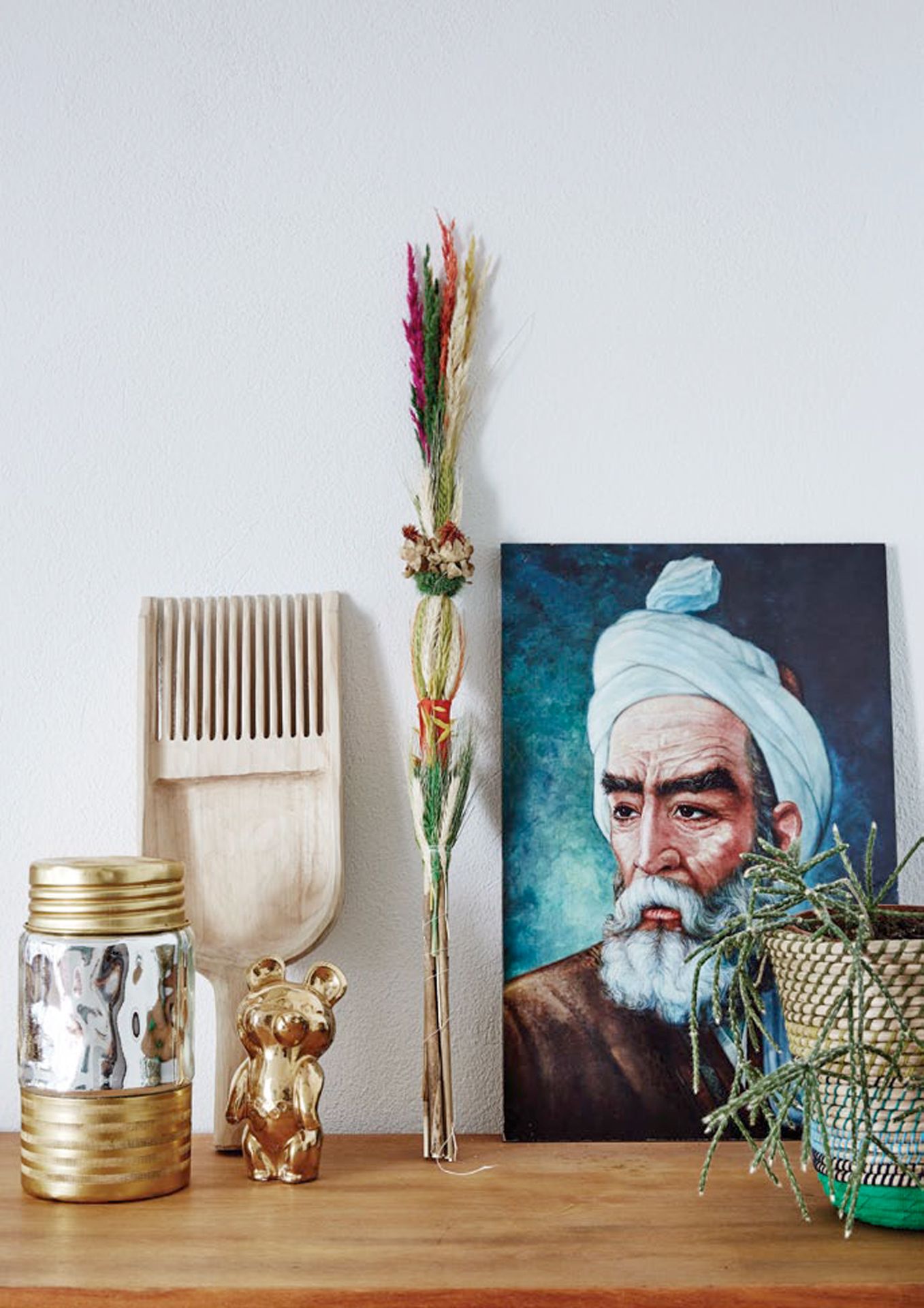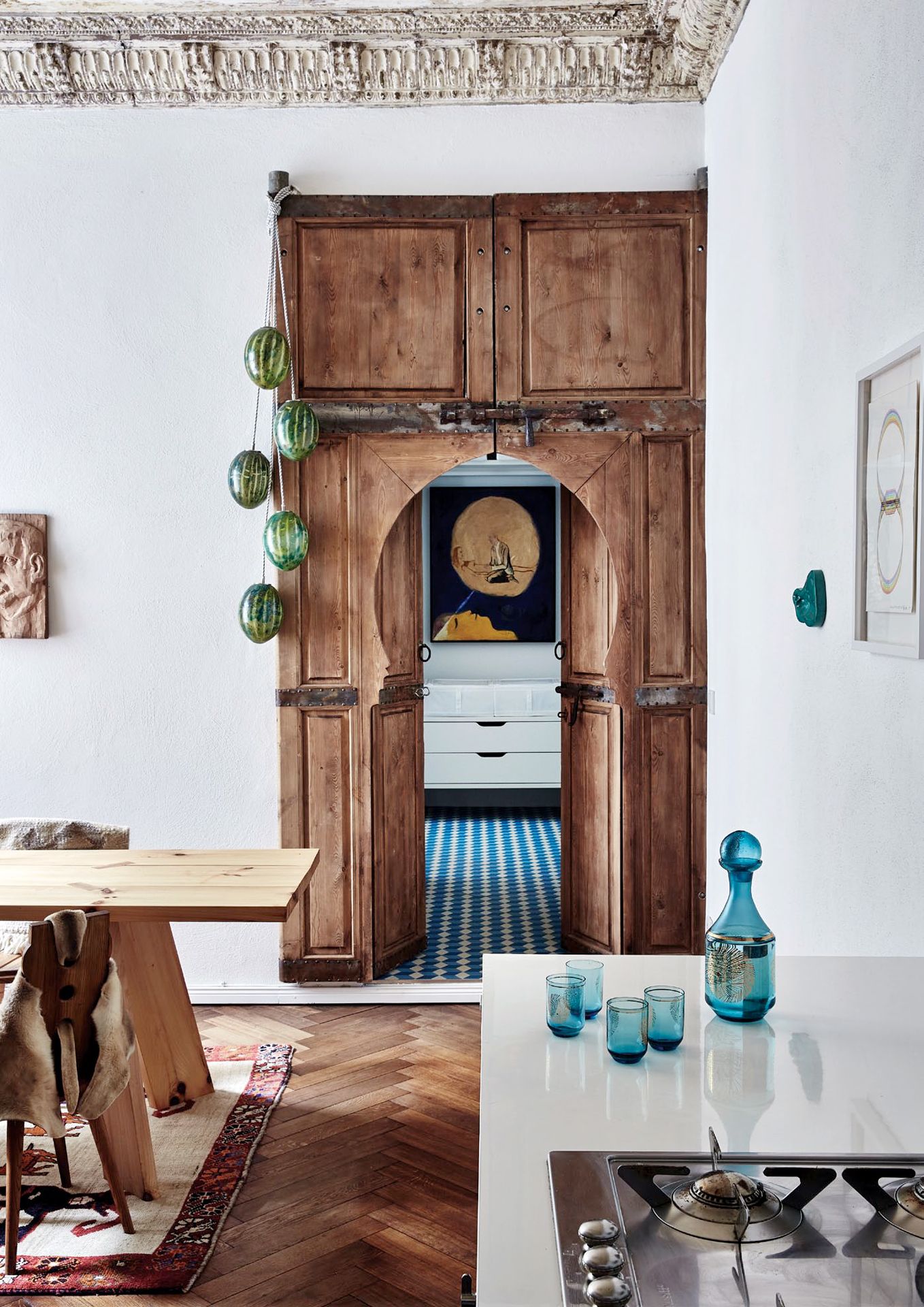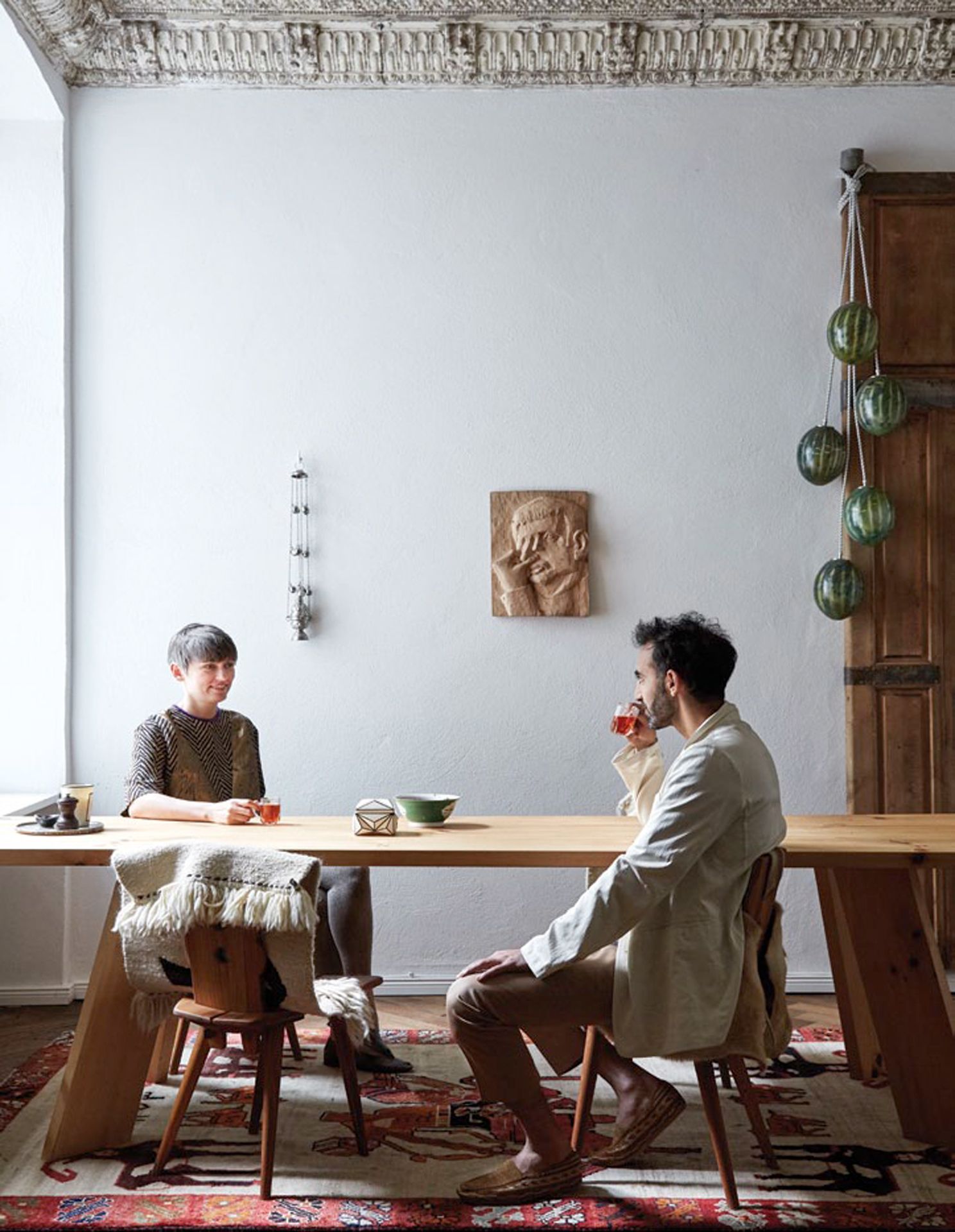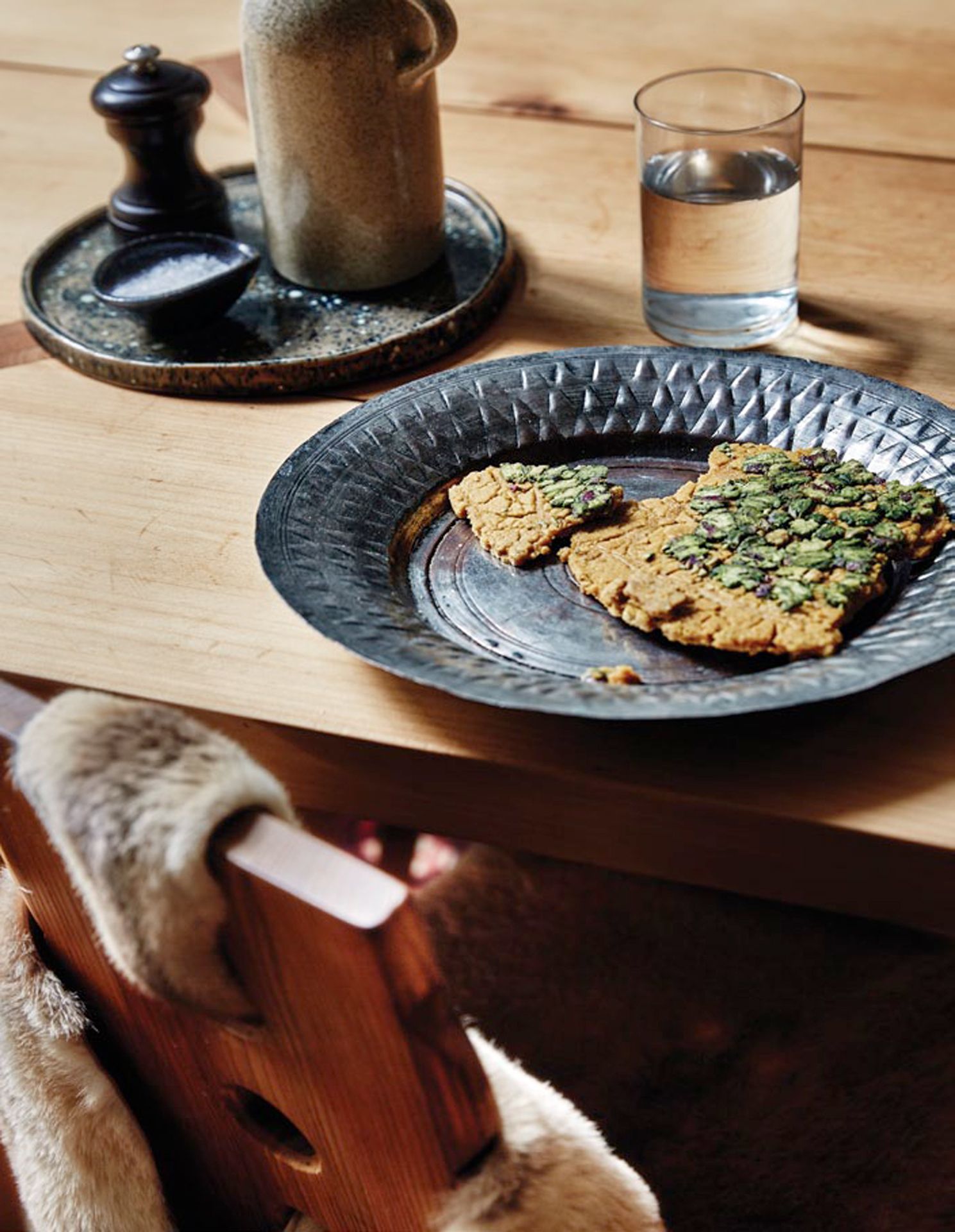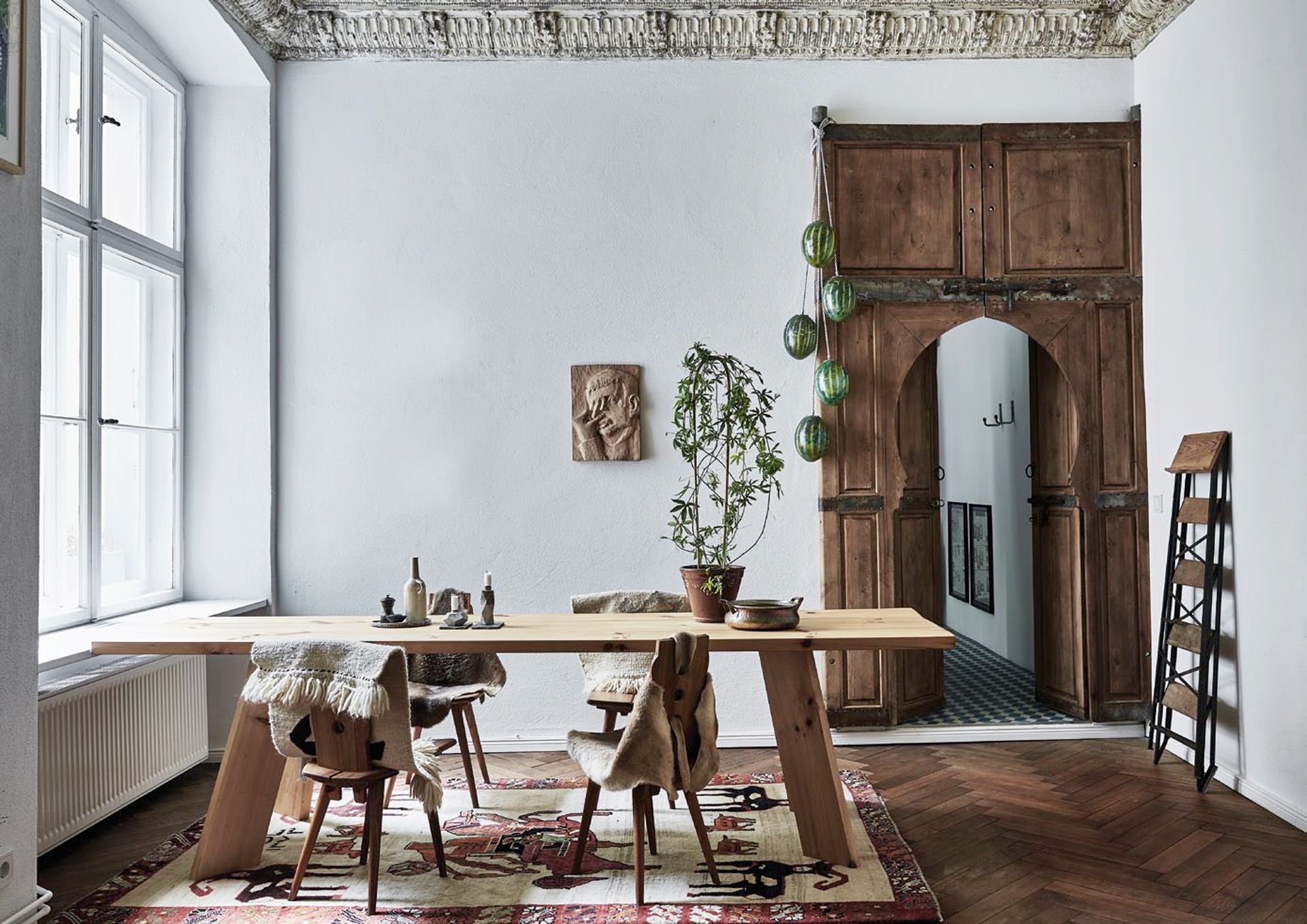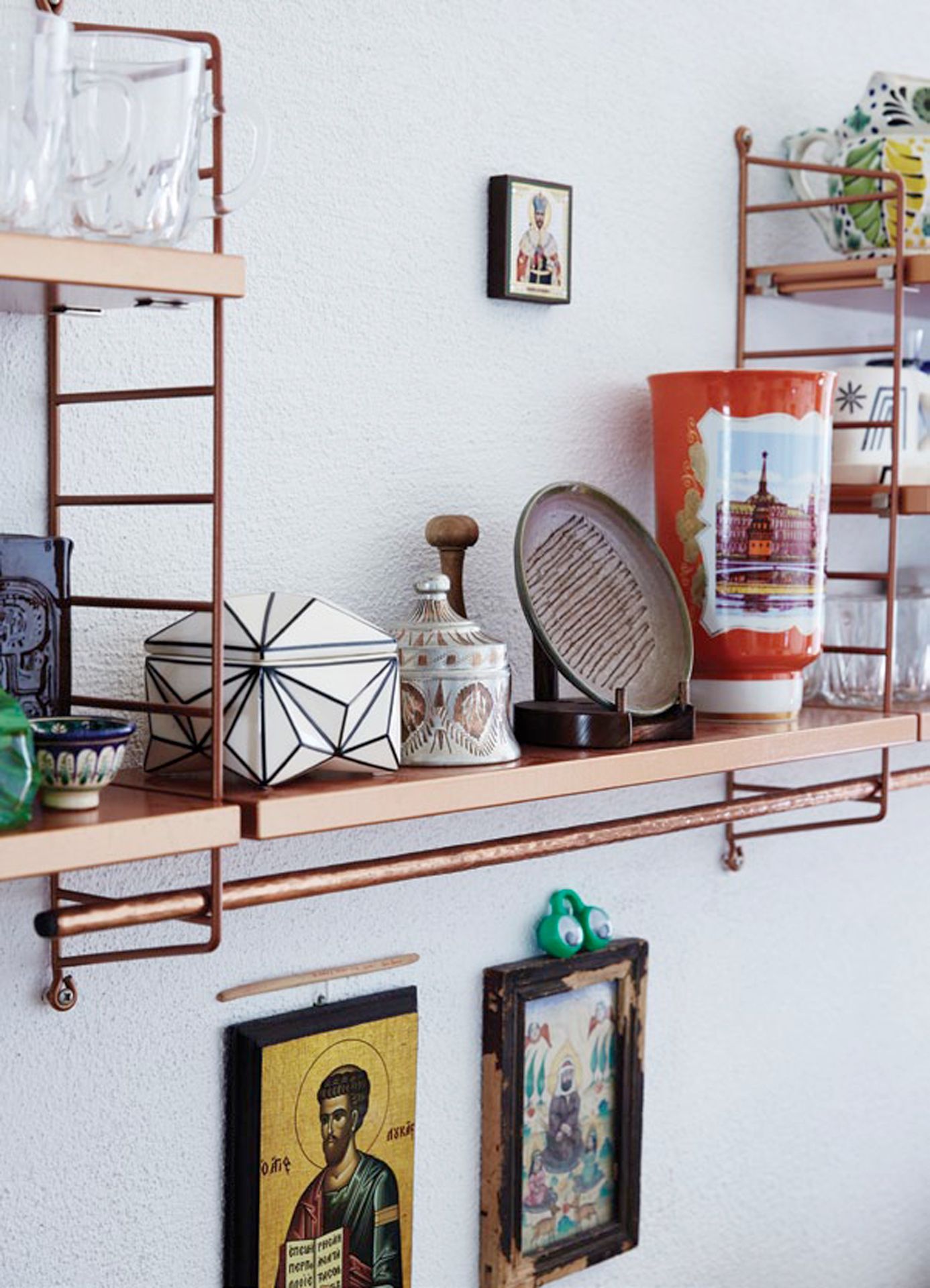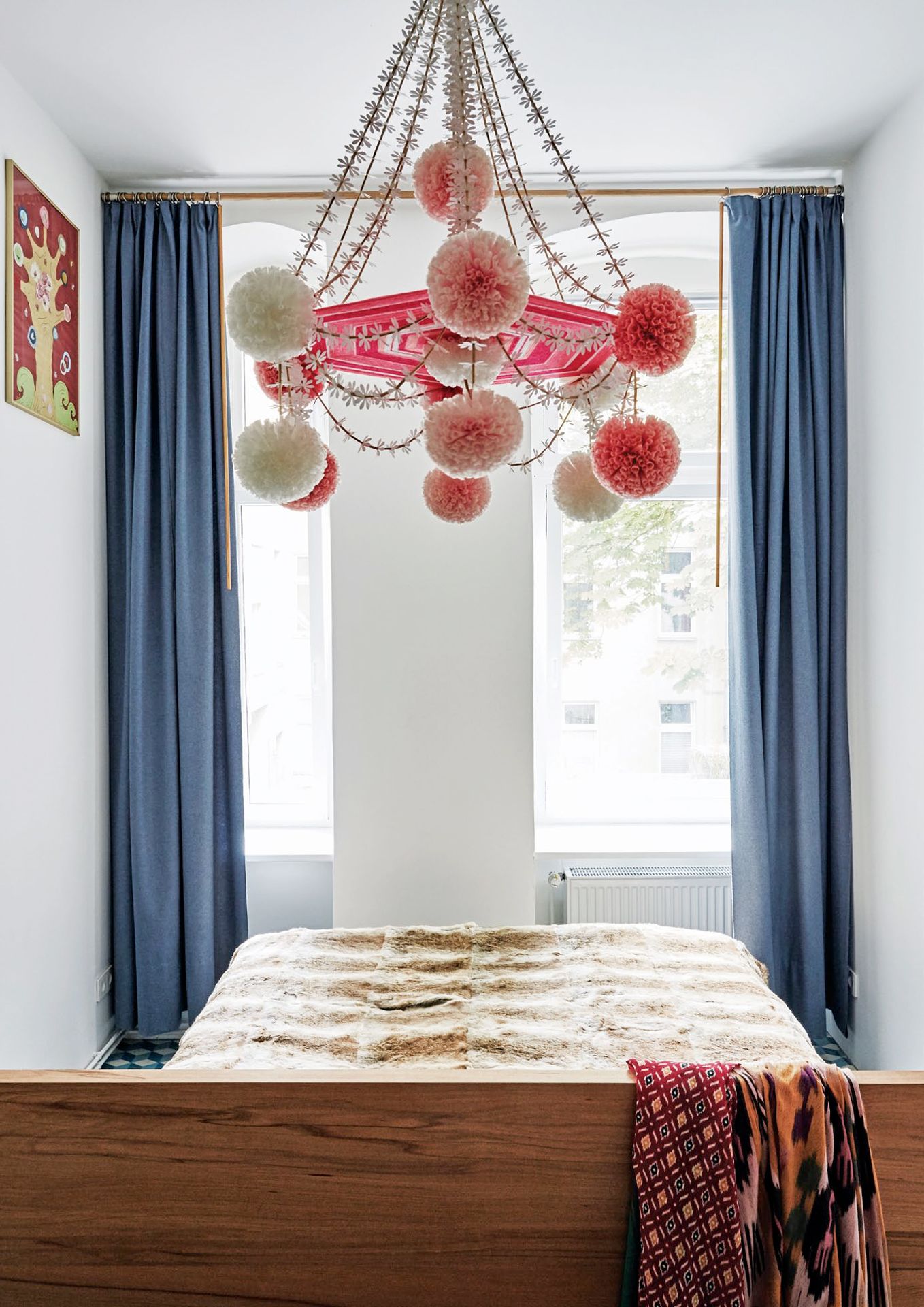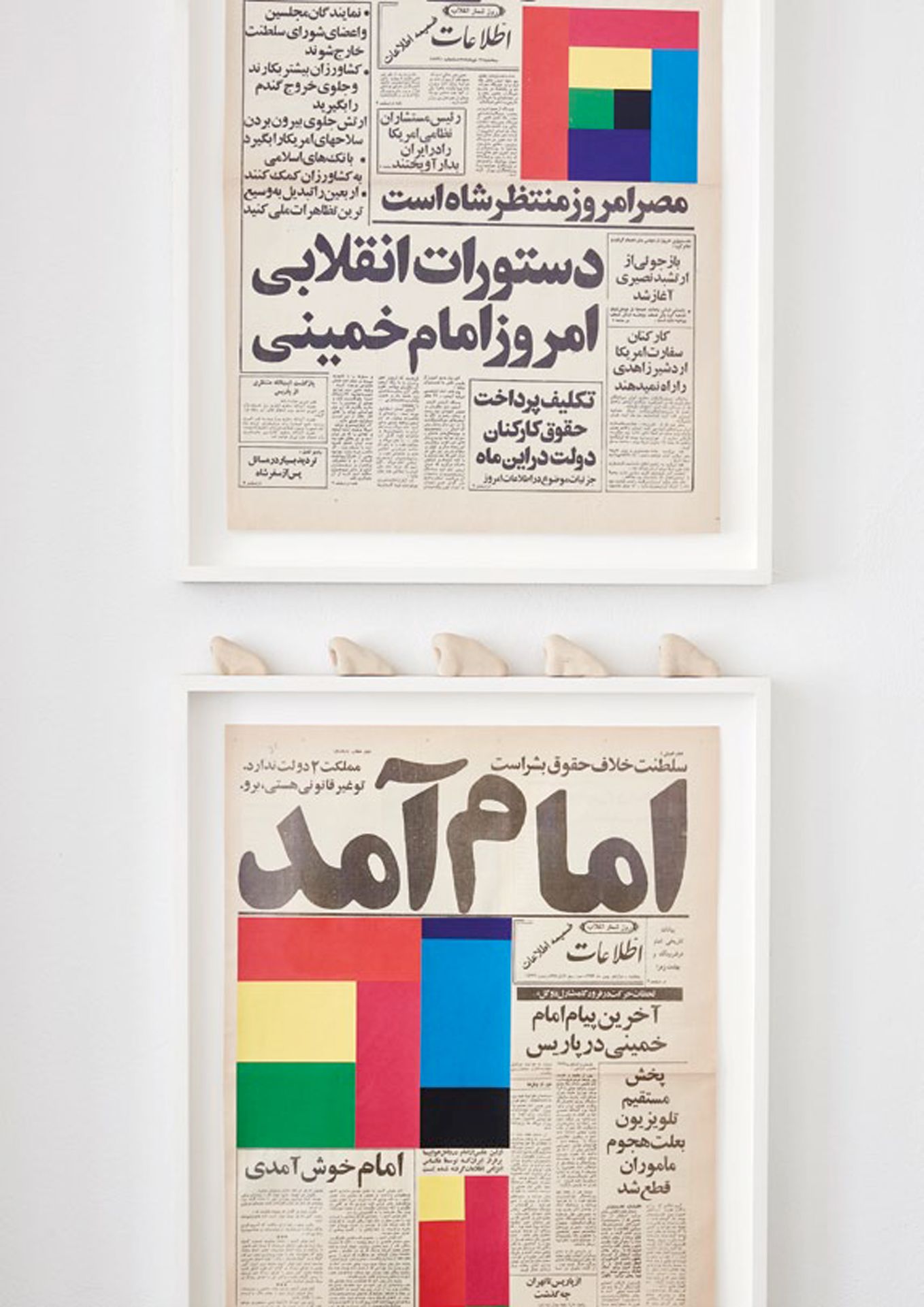At their art, crafts, and folklore-filled home in Berlin, Kasia Korczak and Payam Sharifi make a statement about modern hospitality
An ornately carved Moroccan door leads through the large Berliner Zimmer —a spacious room connecting the front and back houses—to the bedroom in Kasia Korczak and Payam Sharifi’s apartment in a classic Gründerzeitwohnung (Industrial Era building) in Moabit, an inner city locality of Berlin.
Sharifi says that, when the door is closed, it has a tromp l’oeil effect: guests often don’t realise that it’s a real door. “Because it doesn’t fit in with that environment—there’s this traditional Moroccan door squeezed into a 19th-century house—[they assume that] it’s a sculpture or a wall piece,” he says. “They don’t think it opens up.” But it does, and it has a curious psychological impact. “There’s an ‘Open Sesame’ effect of opening an old wooden door, as opposed to a modern door, which makes the passage into the bedroom more pronounced, separating the private space from the more public realm of the home,” he says.

A NECESSARY TRANSITION
Prior to renovating the apartment, Korczak had already decided to include the door in the plans. As their architect Marc Benjamin Drewes, who worked in collaboration with German design firm Schneider Oelsen, recalls, “The first time we walked into the space, it was already lying on the floor.” He freely admits that he would never have been bold enough to include it in a renovation, but loves its effect.
The Moroccan door also marks an important transition in the apartment between the spaces with original 19th-century features—which were restored—and a contrasting, more modern section where new walls were added to accommodate bathrooms and where “we couldn’t rely on the old traditional look,” says Drewes. “Hence we went completely modern and did something without any details.”
Finding this apartment and moving in wasa significant turning point for Korczak and Sharifi. As co-founders of the art collective Slavs and Tatars, they and the other members of the collective had practiced apart, dotted across different cities around the world since they formed in 2006.

